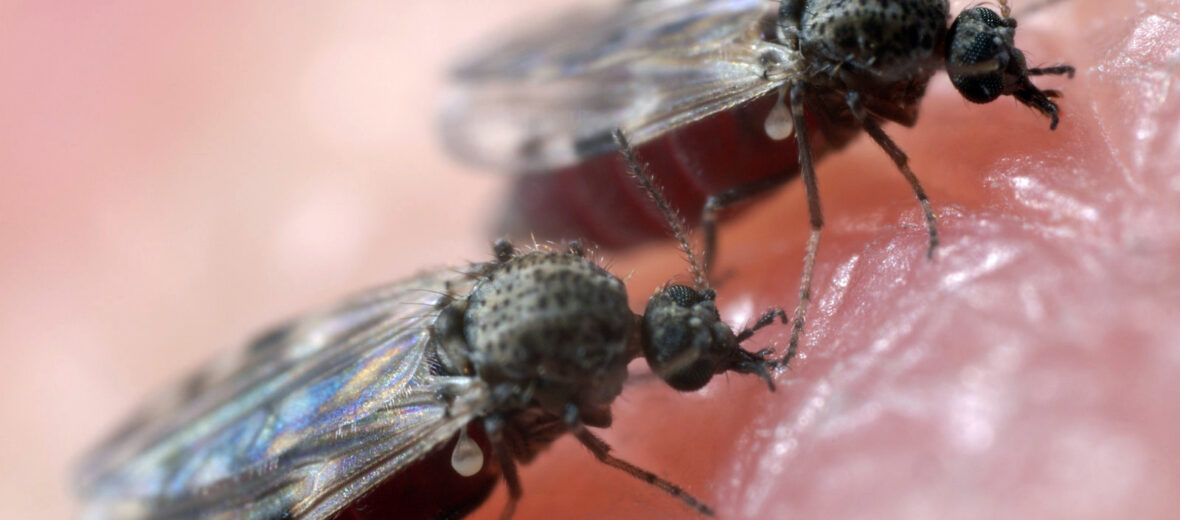
The biting midge, aka no-see-ums, punkies, midgies, or sandflies, are a nuisance the world over. with over 4,000 known species of these annoying critters, there are plenty to go around… and drink your blood. The midge pierces your skin with her proboscis mouth parts and pumps saliva into the fresh wound to prevent it from clotting. It’s this “spit” which causes a mild immune response in humans and animals, yielding itchy red spots as the body looks to repair the new wound.
First the Stats…
Scientific name: Ceratopogonidae
Length: Up to 0.11 of an inch
Lifespan: Up to 7 weeks
Now on to the Facts!
1.) First off, like mosquitoes, only the females bite and look for blood meals.
2.) What makes you a target for the biting midge? Your scent and carbon dioxide. The stronger your body odor, or the more you mouth breathe the more of a buffet you’ll look like to the midge.
3.) These insects are crepuscular (active at dawn and dusk).
4.) They are a member of the fly family, not the mosquito family.
5.) The only sure fire way to keep from being a midge’s dinner/breakfast is to stay inside or use insect repellent. But not even insect repellent is 100% effective.
But wait, there’s more on the biting midge!
6.) The larvae of these mini pests molt 4 times with the final instar being the pupa stage. They then emerge as an adult 2 – 3 days later. The whole process takes up to 22 weeks.
7.) Their larvae live in fresh and even brackish water, in wet soil, and under tree bark and moist debris.
Did you know…?
Some people develop bullae. These are fluid-filled blisters, weals, or circular, fluid-filled areas around the site of the bite(s).
8.) Females lay up to 110 eggs approximately every 3 weeks.
Now a Short Biting Midge Video!
Also, check out the Critter Science YouTube channel. Videos added frequently!
Want to suggest a critter for me to write about? Let me know here.




Leave a Reply